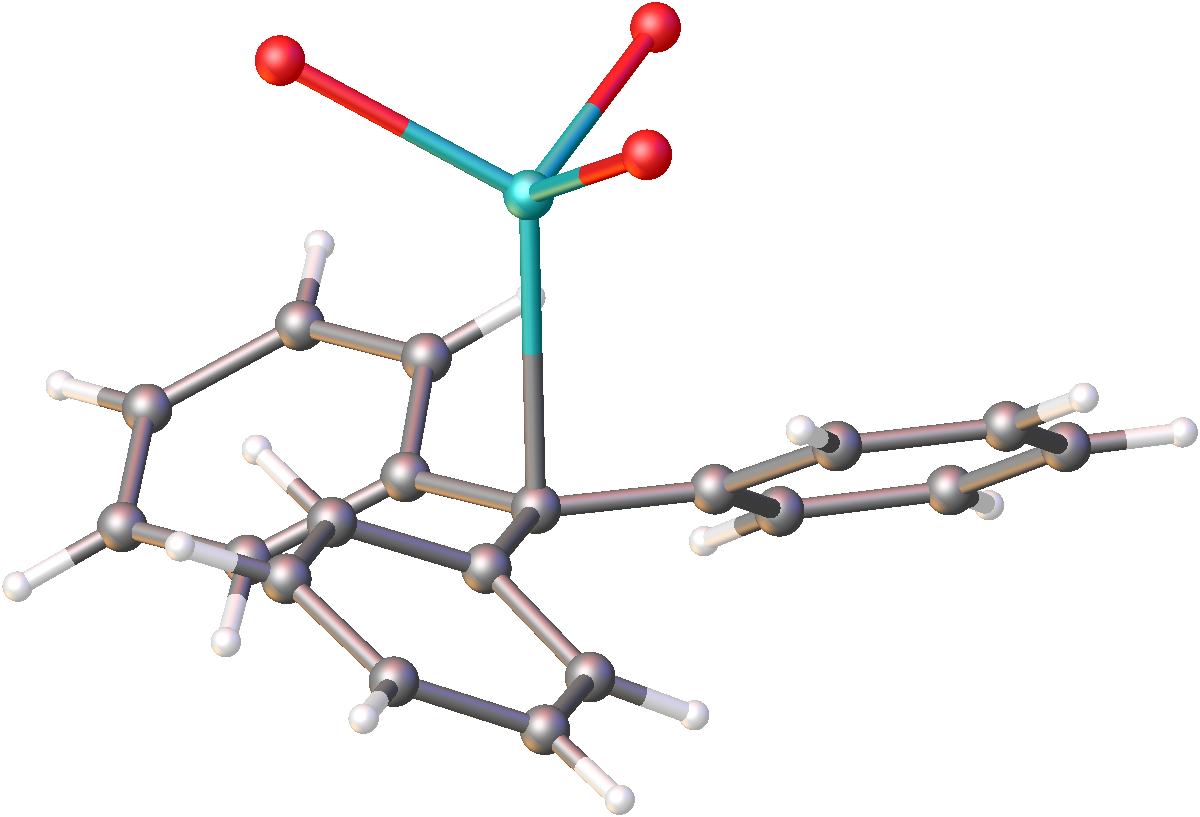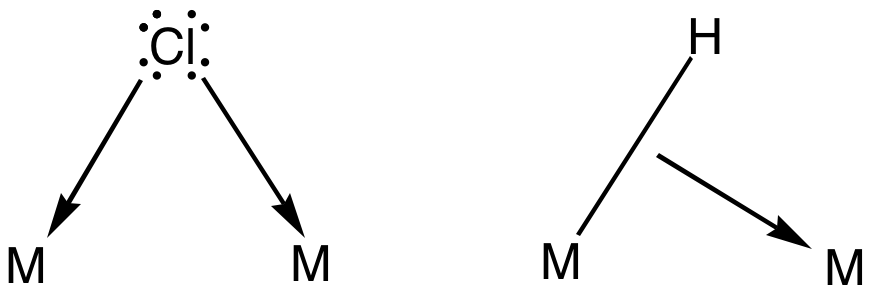|
Sodium Cyclopentadienyl
Sodium cyclopentadienide is an organosodium compound with the formula C5H5Na. The compound is often abbreviated as NaCp, where Cp− is the cyclopentadienide anion. Sodium cyclopentadienide is a colorless solid, although samples often are pink owing to traces of oxidized impurities. Preparation Sodium cyclopentadienide is commercially available as a solution in THF. It is prepared by treating cyclopentadiene with sodium: : The conversion can be conducted by heating a suspension of molten sodium in dicyclopentadiene.Tarun K. Panda, Michael T. Gamer, Peter W. Roesky "An Improved Synthesis of Sodium and Potassium Cyclopentadienide" Organometallics, 2003, 22, 877–878. In former times, the sodium was provided in the form of "sodium wire" or "sodium sand", a fine dispersion of sodium prepared by melting sodium in refluxing xylene and rapidly stirring. Sodium hydride is a convenient base: : In early work, Grignard reagents were used as bases. With a p''K''a of 15, cyclope ... [...More Info...] [...Related Items...] OR: [Wikipedia] [Google] [Baidu] |
Tetrahydrofuran
Tetrahydrofuran (THF), or oxolane, is an organic compound with the formula (CH2)4O. The compound is classified as heterocyclic compound, specifically a cyclic ether. It is a colorless, water- miscible organic liquid with low viscosity. It is mainly used as a precursor to polymers. Being polar and having a wide liquid range, THF is a versatile solvent. Production About 200,000 tonnes of tetrahydrofuran are produced annually. The most widely used industrial process involves the acid-catalyzed dehydration of 1,4-butanediol. Ashland/ISP is one of the biggest producers of this chemical route. The method is similar to the production of diethyl ether from ethanol. The butanediol is derived from condensation of acetylene with formaldehyde followed by hydrogenation. DuPont developed a process for producing THF by oxidizing ''n''-butane to crude maleic anhydride, followed by catalytic hydrogenation. A third major industrial route entails hydroformylation of allyl alcohol follow ... [...More Info...] [...Related Items...] OR: [Wikipedia] [Google] [Baidu] |
Zirconocene Dichloride
Zirconocene dichloride is an organozirconium compound composed of a zirconium central atom, with two cyclopentadienyl and two chloro ligands. It is a colourless diamagnetic solid that is somewhat stable in air. Preparation and structure Zirconocene dichloride may be prepared from zirconium(IV) chloride-THF complex and sodium cyclopentadienide: :ZrCl4(THF)2 + 2 NaCp → Cp2ZrCl2 + 2 NaCl + 2 THF The closely related compound Cp2ZrBr2 was first described by Birmingham and Wilkinson. The compound is a bent metallocene: the Cp rings are not parallel, the average Cp(centroid)-M-Cp angle being 128°. The Cl-Zr-Cl angle of 97.1° is wider than in niobocene dichloride (85.6°) and molybdocene dichloride (82°). This trend helped to establish the orientation of the HOMO in this class of complex. Reactions Schwartz's reagent Zirconocene dichloride reacts with lithium aluminium hydride to give Cp2ZrHCl Schwartz's reagent: :(C5H5)2ZrCl2 + 1/4 LiAlH4 → (C5H5)2ZrHCl + 1/4 LiAlCl4 Since ... [...More Info...] [...Related Items...] OR: [Wikipedia] [Google] [Baidu] |
Organosodium Compounds
Organosodium chemistry is the chemistry of organometallic compounds containing a carbon to sodium chemical bond. The application of organosodium compounds in chemistry is limited in part due to competition from organolithium compounds, which are commercially available and exhibit more convenient reactivity. The principal organosodium compound of commercial importance is sodium cyclopentadienide. Sodium tetraphenylborate can also be classified as an organosodium compound since in the solid state sodium is bound to the aryl groups. Organometal bonds in group 1 are characterised by high polarity with corresponding high nucleophilicity on carbon. This polarity results from the disparate electronegativity of carbon (2.55) and that of lithium 0.98, sodium 0.93 potassium 0.82 rubidium 0.82 caesium 0.79). The carbanionic nature of organosodium compounds can be minimized by resonance stabilization, for example, Ph3CNa. One consequence of the highly polarized Na-C bond is that simp ... [...More Info...] [...Related Items...] OR: [Wikipedia] [Google] [Baidu] |
Lithium Cyclopentadienide
Lithium cyclopentadienide is an organolithium compound with the formula C5H5Li. The compound is often abbreviated as LiCp, where Cp− is the cyclopentadienide anion. Lithium cyclopentadienide is a colorless solid, although samples often are pink owing to traces of oxidized impurities. Preparation, structure and reactions Lithium cyclopentadienide is commercially available as a solution in THF. It is prepared by treating cyclopentadiene with butyllithium: :C5H6 + LiC4H9 → LiC5H5 + C4H10 Because lithium cyclopentadienide is usually handled as a solution, the solvent-free solid is rarely encountered. According to X-ray crystallography, LiCp is a "polydecker" sandwich complex, consisting of an infinite chain of alternating Li+ centers sandwiched between ''μ''- ''η''5:''η''5-C5H5 ligands. In the presence of amines or ethers, LiCp gives adducts, e.g. (''η''5-Cp)Li(TMEDA). LiCp is a common reagent for the preparation of cyclopentadienyl complexes. See also *Sodium cy ... [...More Info...] [...Related Items...] OR: [Wikipedia] [Google] [Baidu] |
Tetrabutylammonium
Tetrabutylammonium is a quaternary ammonium cation with the formula (C4H9)4sup>+. It is used in the research laboratory to prepare lipophilic salts of inorganic anions. Relative to tetraethylammonium derivatives, tetrabutylammonium salts are more lipophilic but crystallize less readily. Derivatives Some tetrabutylammonium salts of simple anions include: * tetrabutylammonium fluoride, a desilylation reagent. *tetrabutylammonium bromide, a precursor to other tetrabutylammonium salts via salt metathesis reactions. *tetrabutylammonium iodide, a low cost catalyst. * tetrabutylammonium triiodide, a common carrier of the triiodide anion used in chemical synthesis. * tetrabutylammonium hydroxide, a precursor to other tetrabutylammonium salts via acid-base reactions. * tetrabutylammonium hexafluorophosphate, an electrolyte for nonaqueous electrochemistry. Some tetrabutylammonium salts of more complex examples include: * polyoxometalates. *NS. * metal carbonyl anions. *Synthetic iron-sulf ... [...More Info...] [...Related Items...] OR: [Wikipedia] [Google] [Baidu] |
Tmeda
Tetramethylethylenediamine (TMEDA or TEMED) is a chemical compound with the formula (CH3)2NCH2CH2N(CH3)2. This species is derived from ethylenediamine by replacement of the four amine hydrogens with four methyl groups. It is a colorless liquid, although old samples often appear yellow. Its odor is similar to that of rotting fish. As a reagent in synthesis TMEDA is widely employed as a ligand for metal ions. It forms stable complexes with many metal halides, e.g. zinc chloride and copper(I) iodide, giving complexes that are soluble in organic solvents. In such complexes, TMEDA serves as a bidentate ligand. TMEDA has an affinity for lithium ions. When mixed with ''n''-butyllithium, TMEDA's nitrogen atoms coordinate to the lithium, forming a cluster of higher reactivity than the tetramer or hexamer that ''n''-butyllithium normally adopts. BuLi/TMEDA is able to metallate or even doubly metallate many substrates including benzene, furan, thiophene, ''N''-alkylpyrroles, and ferrocen ... [...More Info...] [...Related Items...] OR: [Wikipedia] [Google] [Baidu] |
Adduct
An adduct (from the Latin ''adductus'', "drawn toward" alternatively, a contraction of "addition product") is a product of a direct addition of two or more distinct molecules, resulting in a single reaction product containing all atoms of all components. The resultant is considered a distinct molecular species. Examples include the addition of sodium bisulfite to an aldehyde to give a sulfonate. It can just be considered as a single product resulting from the direct combination of different molecules which comprises all the reactant molecules' atoms. Adducts often form between Lewis acids and Lewis bases. A good example is the formation of adducts between the Lewis acid borane and the oxygen atom in the Lewis bases, tetrahydrofuran (THF): BH3·O(CH2)4 or diethyl ether: BH3·O(CH3CH2)2. Many Lewis acids and Lewis bases reacting in the gas phase or in non-aqueous solvents to form adducts have been examined in the ECW model. Trimethylboron, trimethyltin chloride and bis(hexaf ... [...More Info...] [...Related Items...] OR: [Wikipedia] [Google] [Baidu] |
Organometallics
''Organometallics'' is a biweekly journal published by the American Chemical Society. Its area of focus is organometallic and organometalloid chemistry. This peer-reviewed journal has an impact factor of 3.837 as reported by the 2021 Journal Citation Reports by Thomson Reuters. Since 2015 Paul Chirik is the editor-in-chief of ''Organometallics''. He is an American chemist and the Edwards S. Sanford Professor of Chemistry at Princeton University, and associate director for external partnerships of the Andlinger Center for Energy and the Environment. He writes about the catalysis of hydrocarbons. Past editors-in-chief are Dietmar Seyferth and John Gladysz. Retrieved on 2014-07-30. This journal is indexed in |
Hapticity
In coordination chemistry, hapticity is the coordination of a ligand to a metal center via an uninterrupted and contiguous series of atoms. The hapticity of a ligand is described with the Greek letter η ('eta'). For example, η2 describes a ligand that coordinates through 2 contiguous atoms. In general the η-notation only applies when multiple atoms are coordinated (otherwise the κ-notation is used). In addition, if the ligand coordinates through multiple atoms that are not contiguous then this is considered denticity (not hapticity), and the κ-notation is used once again. When naming complexes care should be taken not to confuse η with μ ('mu'), which relates to bridging ligands. History The need for additional nomenclature for organometallic compounds became apparent in the mid-1950s when Dunitz, Orgel, and Rich described the structure of the "sandwich complex" ferrocene by X-ray crystallography where an iron atom is ''"sandwiched"'' between two parallel cyclopent ... [...More Info...] [...Related Items...] OR: [Wikipedia] [Google] [Baidu] |
Bridging Ligand
In coordination chemistry, a bridging ligand is a ligand that connects two or more atoms, usually metal ions. The ligand may be atomic or polyatomic. Virtually all complex organic compounds can serve as bridging ligands, so the term is usually restricted to small ligands such as pseudohalides or to ligands that are specifically designed to link two metals. In naming a complex wherein a single atom bridges two metals, the bridging ligand is preceded by the Greek letter mu, μ, with a subscript number denoting the number of metals bound to the bridging ligand. μ2 is often denoted simply as μ. When describing coordination complexes care should be taken not to confuse μ with η ('eta'), which relates to hapticity. Ligands that are not bridging are called terminal ligands. List of bridging ligands Virtually all ligands are known to bridge, with the exception of amines and ammonia. Common bridging ligands include most of the common anions. Many simple organic ligands form st ... [...More Info...] [...Related Items...] OR: [Wikipedia] [Google] [Baidu] |
Sandwich Complex
In organometallic chemistry, a sandwich compound is a chemical compound featuring a metal bound by haptic, covalent bonds to two arene (ring) ligands. The arenes have the formula , substituted derivatives (for example ) and heterocyclic derivatives (for example ). Because the metal is usually situated between the two rings, it is said to be "sandwiched". A special class of sandwich complexes are the metallocenes. The term ''sandwich compound'' was introduced in organometallic nomenclature in 1956 in a report by J. D. Dunitz, L. E. Orgel and R. A. Rich, who confirmed the structure of ferrocene by X-ray crystallography. The correct structure, in which the molecule features an iron atom ''sandwiched'' between two parallel cyclopentadienyl rings, had been proposed several years previously by Robert Burns Woodward and, separately, by Ernst Otto Fischer. The structure helped explain puzzles about ferrocene's conformers. This result further demonstrated the power of ... [...More Info...] [...Related Items...] OR: [Wikipedia] [Google] [Baidu] |
1,1'-Ferrocenedicarboxylic Acid
1,1'-Ferrocenedicarboxylic acid is the organoiron compound with the formula . It is the simplest dicarboxylic acid derivative of ferrocene. It is a yellow solid that is soluble in aqueous base. The 1,1' part of its name refers to the location of the carboxylic acid groups on separate rings. It can be prepared by hydrolysis of its diesters (R = Me, Et), which in turn are obtained by treatment of ferrous chloride with the sodium salt of the carboxyester of cyclopentadienide . Ferrocenedicarboxylic acid is the precursor to many derivatives such as the diacid chloride, the diisocyanate, the diamide, and diamine A diamine is an amine with exactly two amino groups. Diamines are used as monomers to prepare polyamides, polyimides, and polyureas. The term ''diamine'' refers mostly to primary diamines, as those are the most reactive. In terms of quantities ..., respectively, , , , and . Derivatives of ferrocenedicarboxylic acid are components of some redox switches and r ... [...More Info...] [...Related Items...] OR: [Wikipedia] [Google] [Baidu] |




